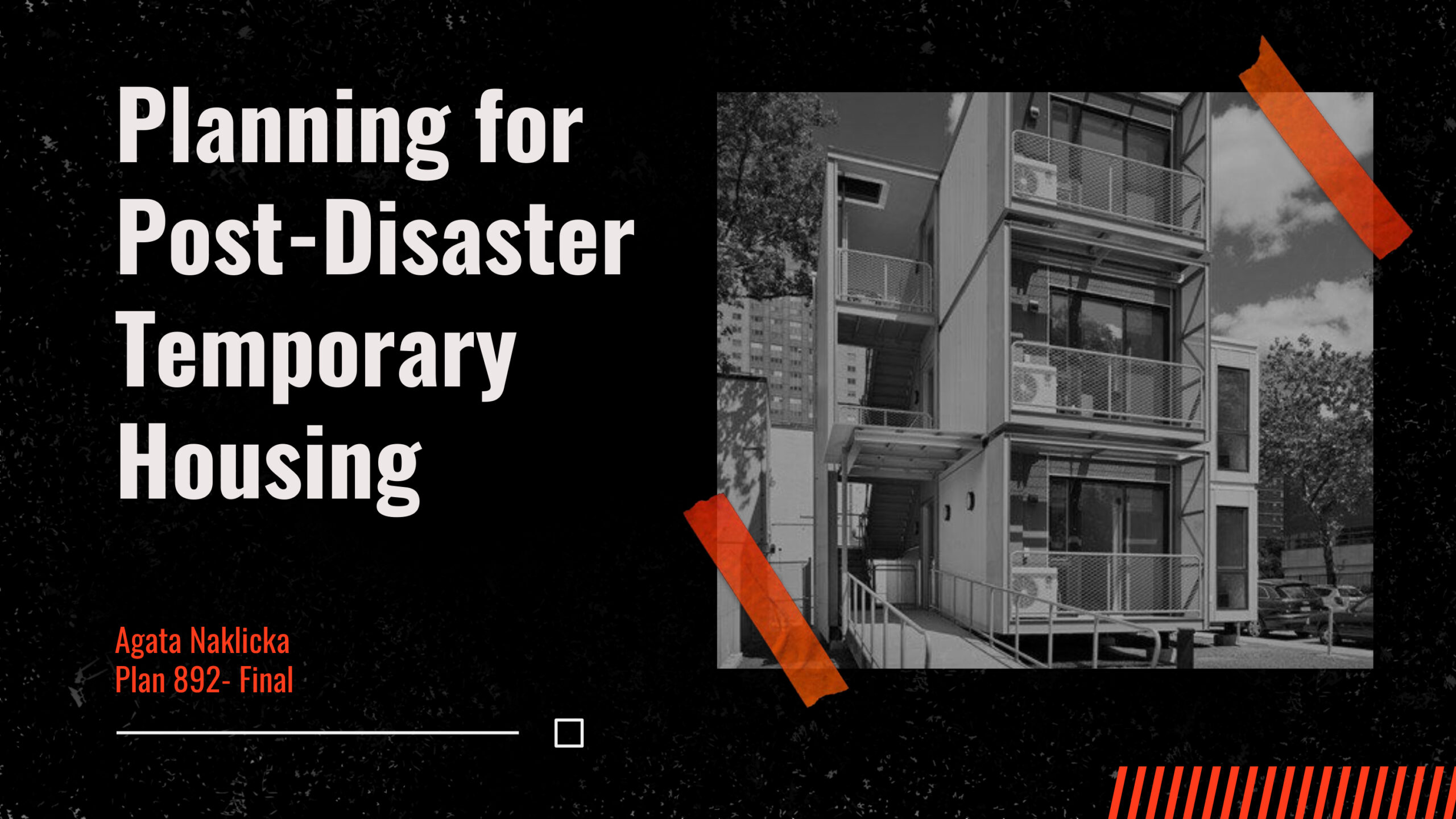Planning for Post-Disaster Temporary Housing

No area is or will be immune to extreme weather events, and climate change will profoundly continue to impact millions of people’s lives. Proper planning for post-disaster recovery, specifically post-disaster housing recovery, is instrumental in preserving communities. However, disaster housing recovery strategies often are reactive, geared towards single-family homeowners, and exacerbate existing urban inequalities. Temporary housing, one phase of housing recovery, is critical in helping people remain in their communities and resume their daily lives while awaiting permanent residence. Still, this phase of recovery is frequently overlooked.
This thesis seeks to demonstrate how the City of New York government (“the City”) needs further planning to house those displaced during a future climate disaster. An analysis of housing recovery efforts during Hurricane Ida and Hurricane Sandy illustrates the City’s unpreparedness to provide adequate housing for vulnerable populations, and the unprecedented damage different types of flooding can cause. A lack of sufficient urban solutions for rehousing those displaced by disasters was a problem explored by City agencies through the Urban Post-Disaster Housing Prototype Program post-Hurricane Katrina. Eight years since the completion of one NYC Temporary Housing Prototype, there remains a gap in policy and planning for various forms of urban temporary housing. Based on these assessments, this thesis presents a series of recommendations on where to locate temporary housing, additional design and planning considerations informed by global precedents, and further policy measures to promote more equity in this phase of housing recovery.